In the heat of a South Carolina summer, Pondscapes of Charlotte embarked on an extraordinary project—a stunning recreational pond nestled in the heart of York, South Carolina. Inspired by the beauty of nature, the home owners decided instead of having a pool installed in their backyard they were going to have a natural recreational pond!
Is A Pool or Pond Cheaper?

Wondering how much a recreational pond would cost? Is a pool or pond cheaper? Well it depends…A normal pond that is not meant for recreation would normally be cheaper then a pool. A recreational pond is probably about the same cost as a nice swimming pool. It really depends on the size and scale you wish your recreation pond to be. You can safely assume a properly built recreational pond would start at around $100,000. A recreational pond like the one featured in this blog post would go for somewhere in the neighborhood of $190,000 at the time of this post.
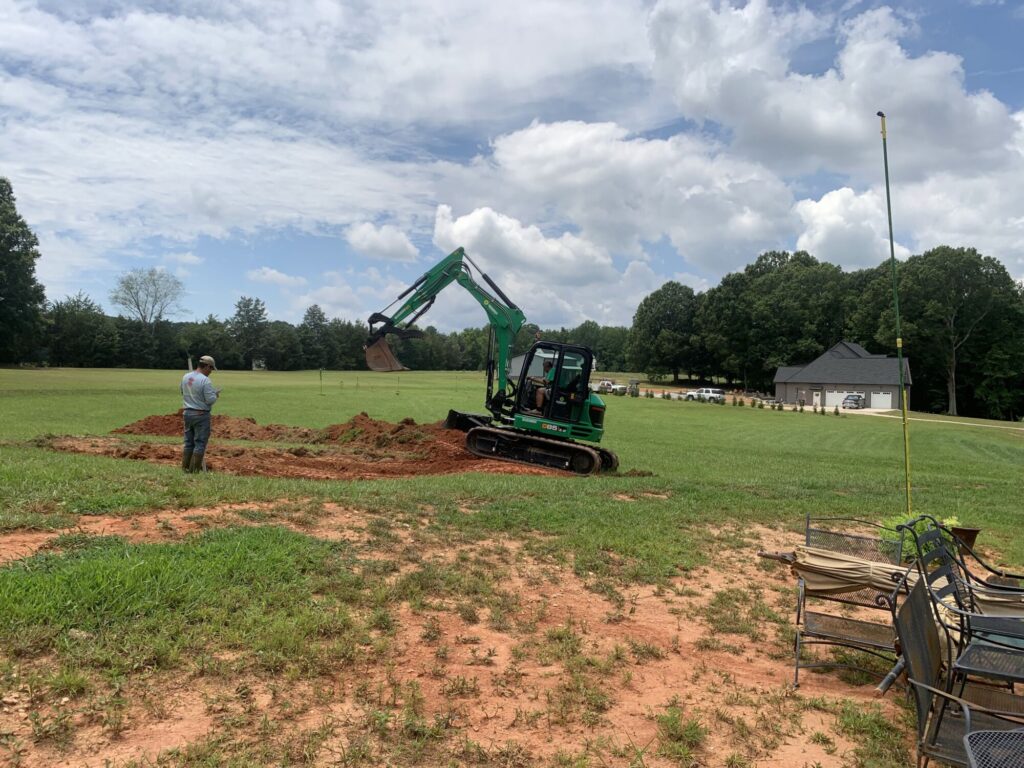
Breaking Ground
In the photo above you can see a rare moment as Vicente Garcia stands by as The Top Frog, Dave Blocksom, is in the excavator breaking ground starting to sculpt the outline of the recreational pond.
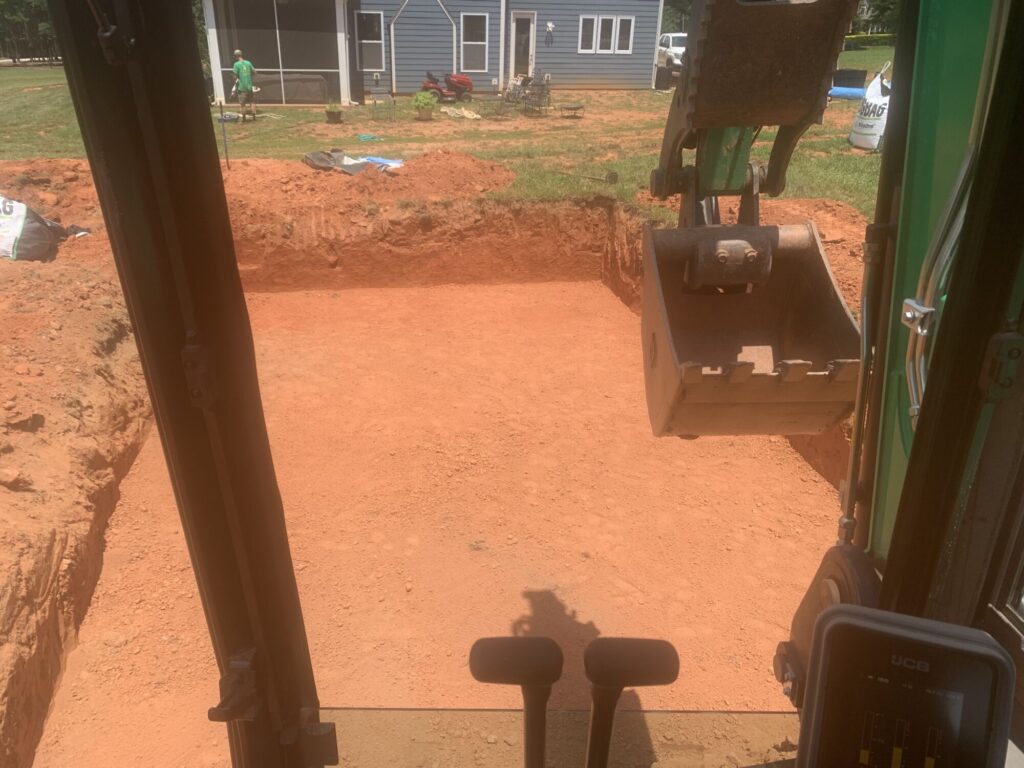
Excavation
Excavation of the pond was easy work with the excavator. Braeden Branch helped out with digging the pond down to roughly 4 1/2 feet deep. Everyone then was able to help rake out the bottom making it smooth while also having a low spot that all the water would run to when the water feature was empty. This would make it a lot easier for us to clean the rocks before we filled it.
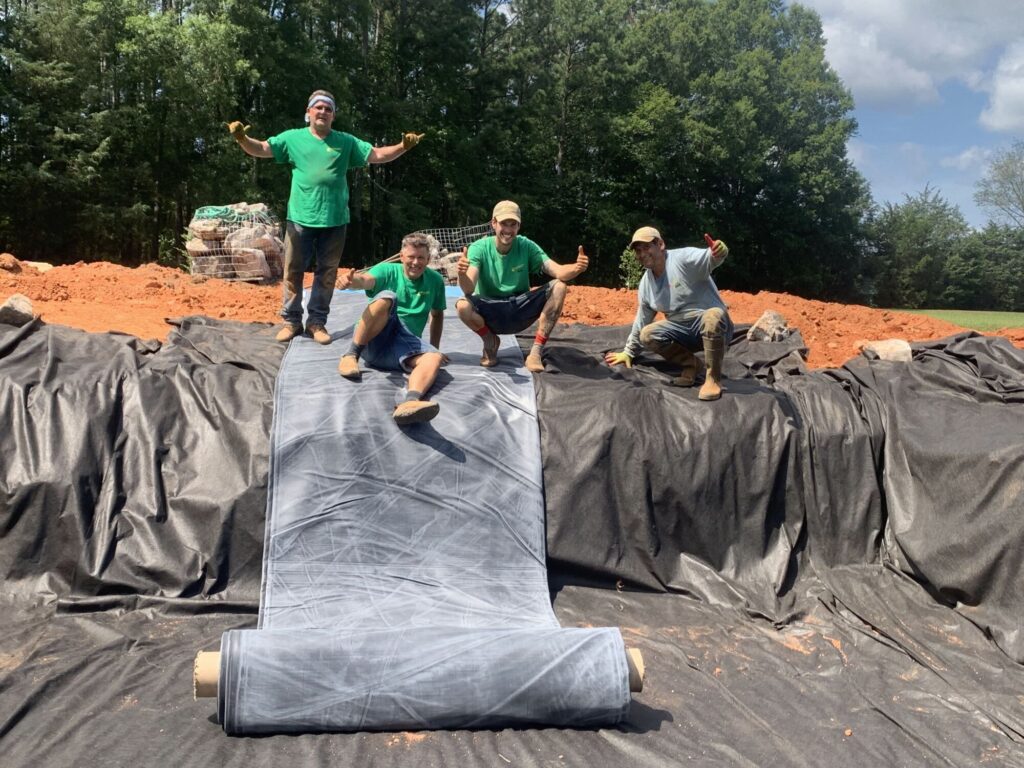
Liner & Underlayment
Now with the pond dug out the next step was to add underlayment and liner. The underlayment is the black fabric material in the photo. The purpose is to provide a barrier in between the liner and the soil helping protect the liner from any sharp objects that may be in the soil. On this job we were extra careful making sure there was nothing underneath the underlayment but clean clay or soil. We also added another layer of underlayment on top of the liner for extra protection. So essentially the liner was sandwhiched inbetween two layers of underlayment.
The liner we used 45 mil EPDM rubber liner. This is what is on the roll in the photo above. It is extremely heavy and we needed to use the excavtor to move it into place. Once we got it near the pond we were able to roll into into the pond and with the help of everyone spread it out covering the entire pond.
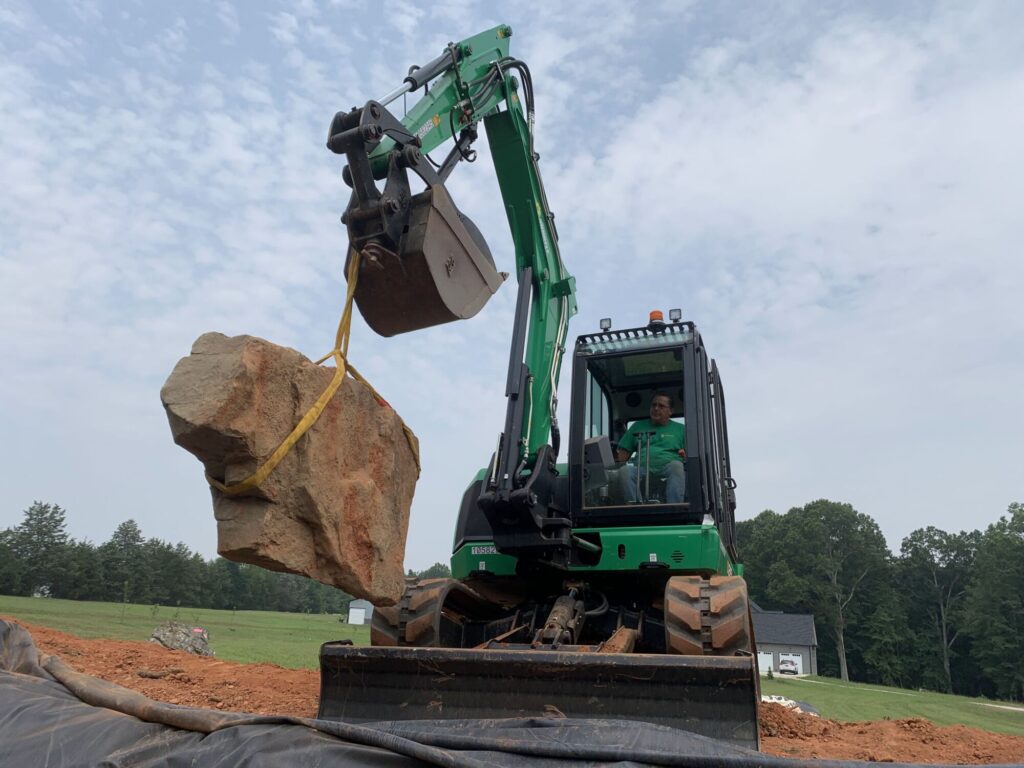
Finding the Boulders & Inspiration
The boulders on this project were all hand selected from the mountains of Tennessee. Dave and Brad Blocksom took a trip to the mountains and visited a fellow father and son team, John and Triston Adams from Mondern Design Aquascaping. There they were able to get some inspiration from the recreational pond that they built as well as some advice and tips on how to make the best recreational ponds. If you are interested in seeing the rec pond that they have built check out the video below!

Big Boulders
We used over 150 tons of boulders to complete this recreational pond. They would get trucked from the mountains directly to the job site where we unloaded them and brought them to the backyard where the pond was being built.
There were a lot of large boulders used on this project. The heaviest ones weighing over 2 tons. The large boulders had to be secured and stable. Every boulder placed in the pond we jumped up and down on and tested the security of the boulder making sure that once it was set it was locked in by the next boulder and would never move!
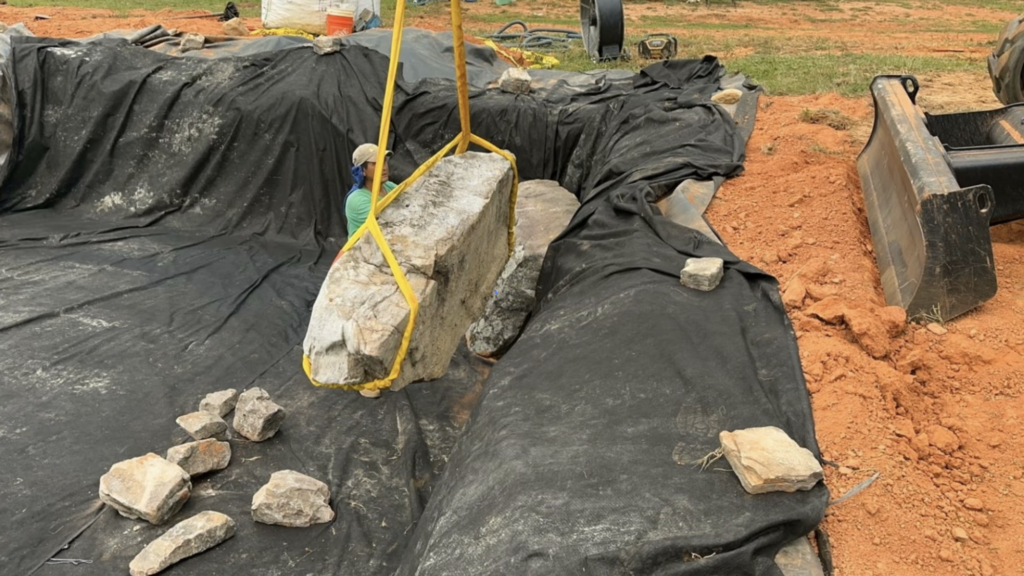
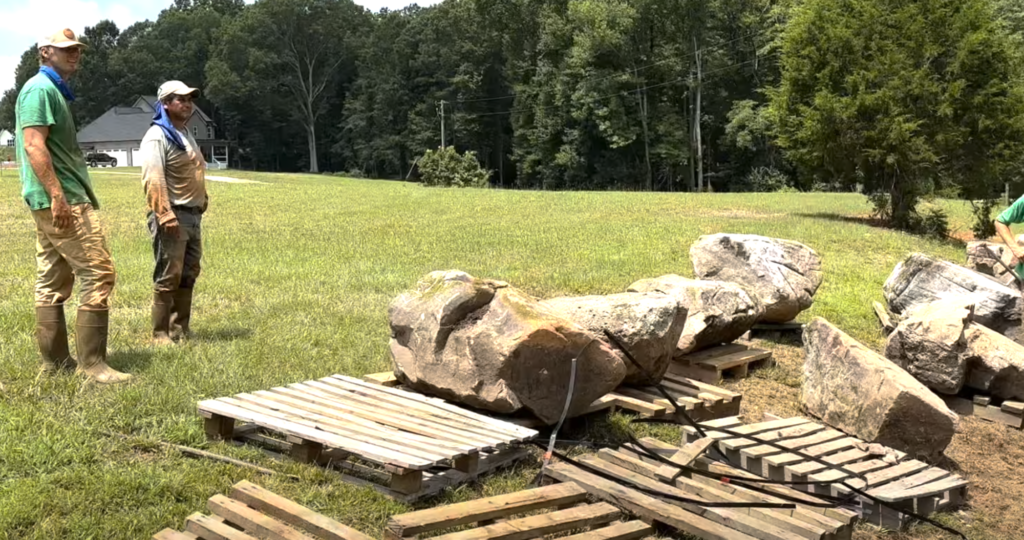
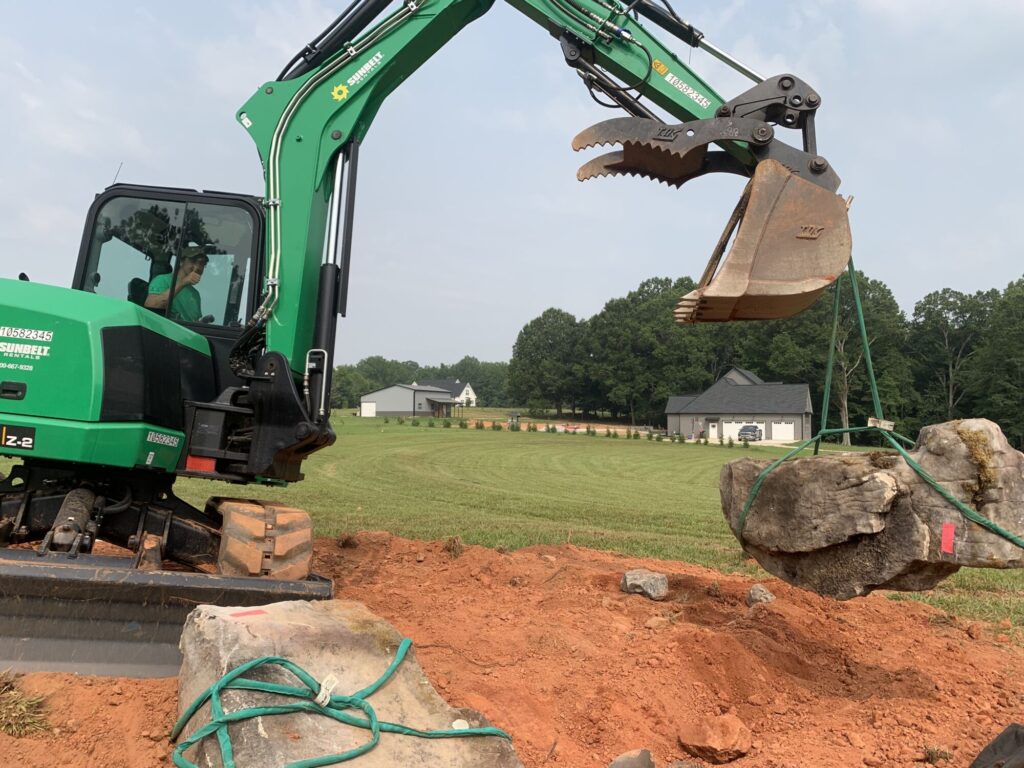
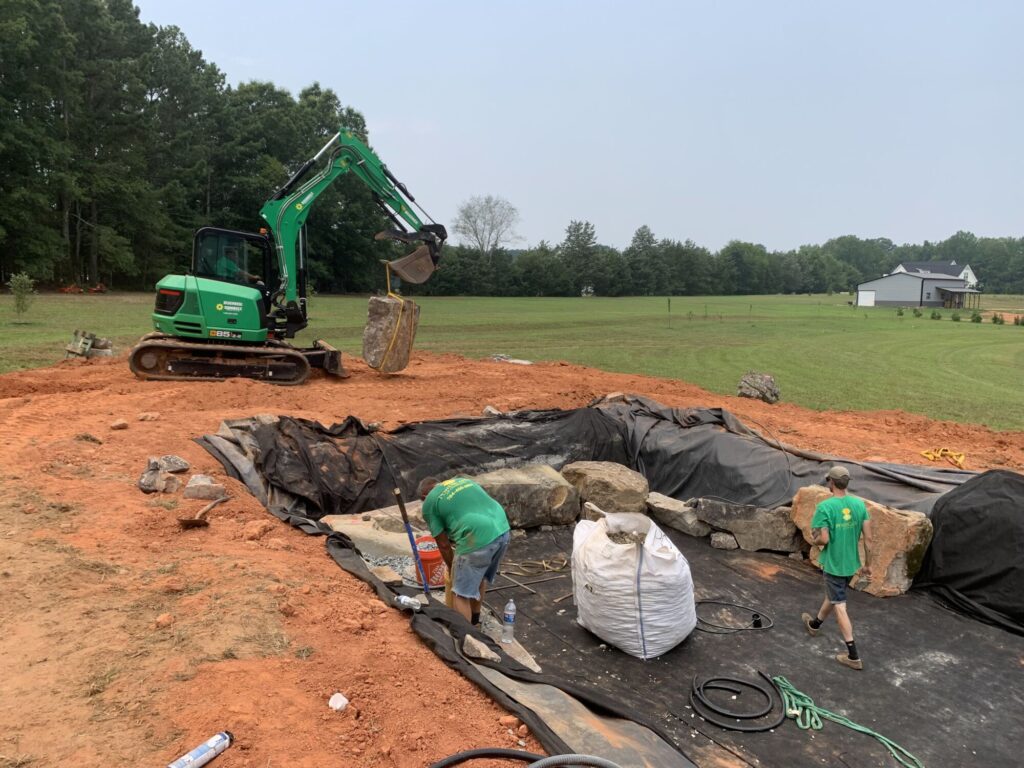

Filtration System
A recreational pond needs a larger filter than a normal backyard ornamental pond. In this photo above you can see Doug Mazzullo and Evan Brandhorst working on the filtration system. It rained heavily that day but they battles through the elements with a smile on their face!
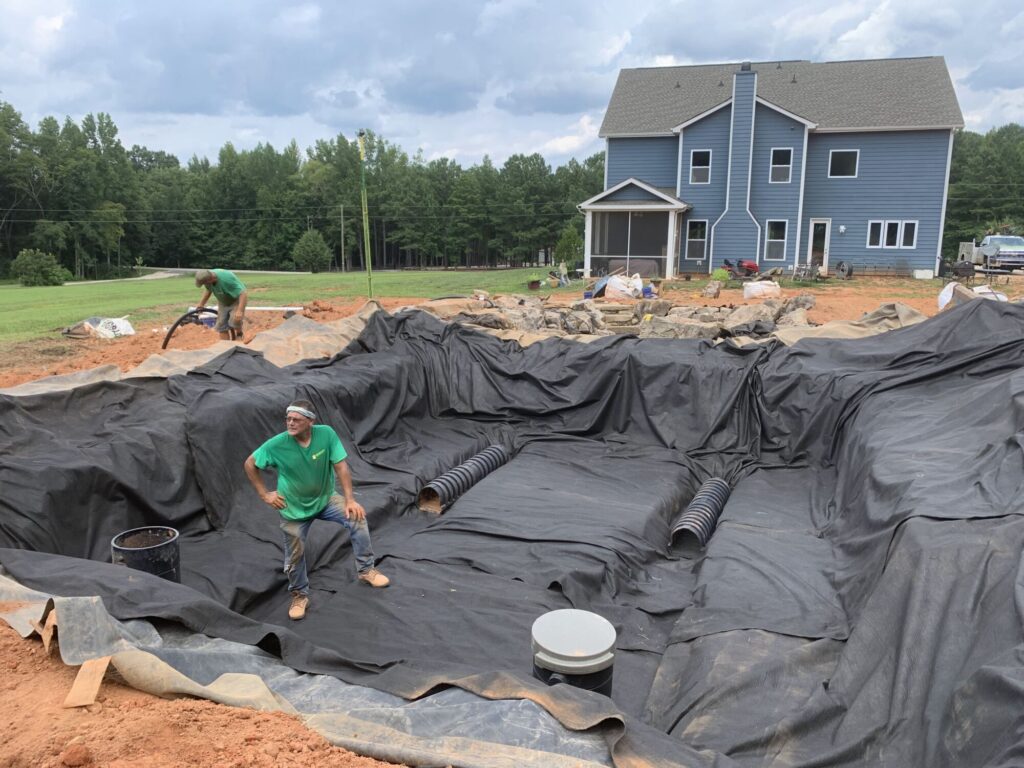
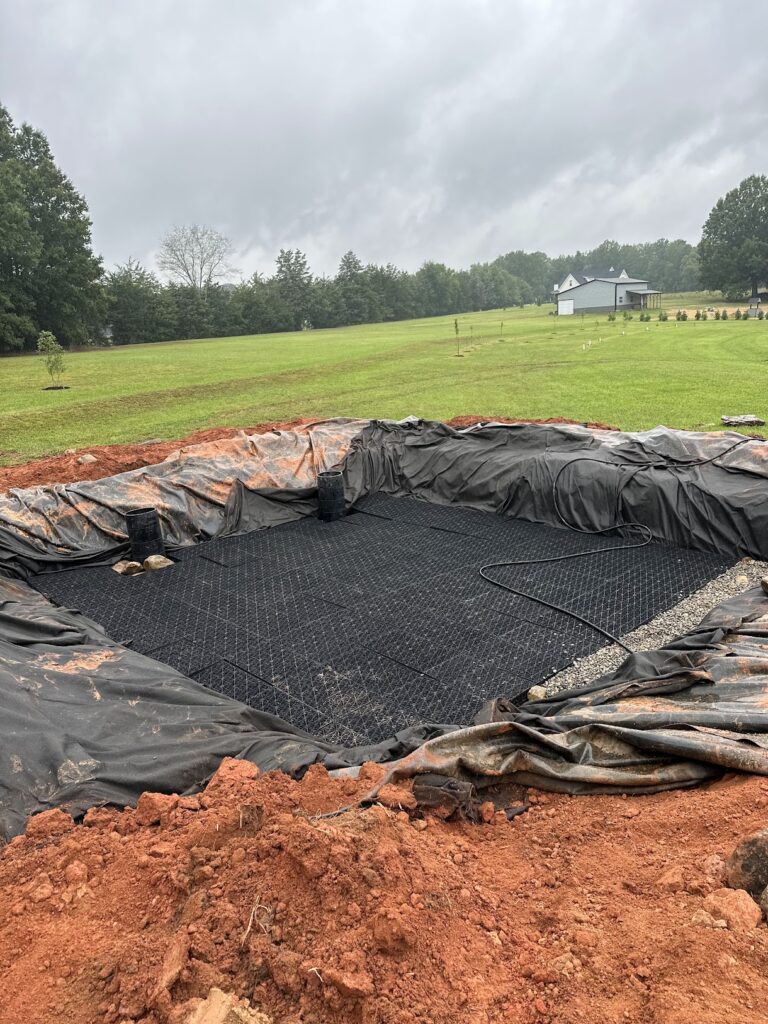
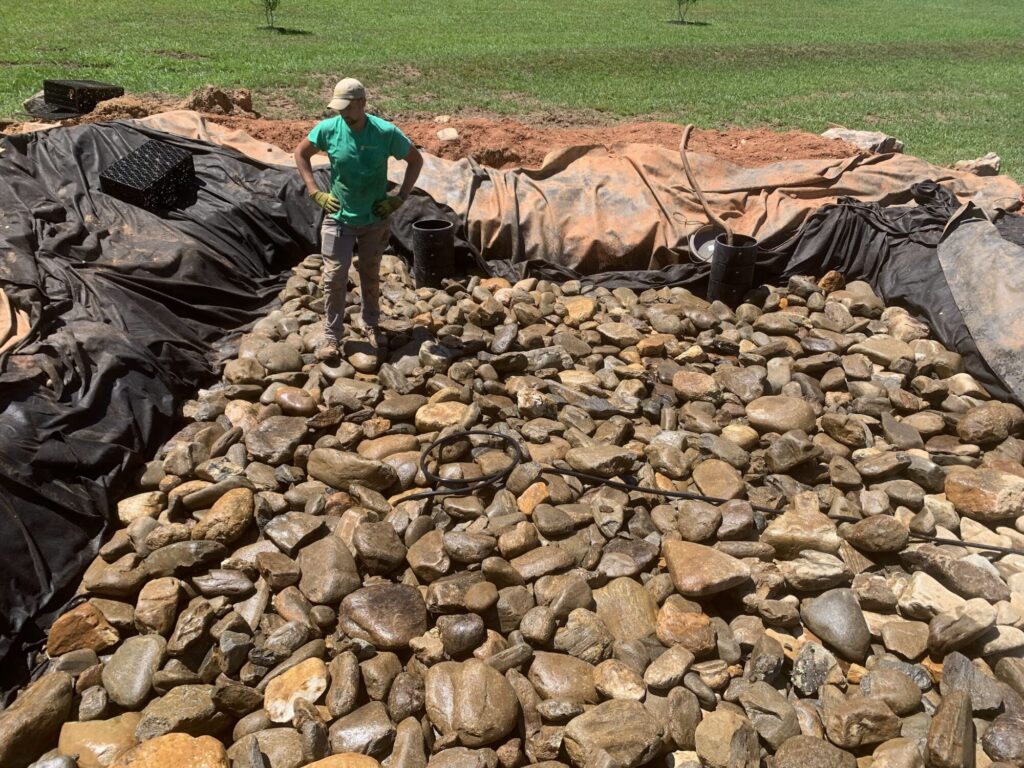
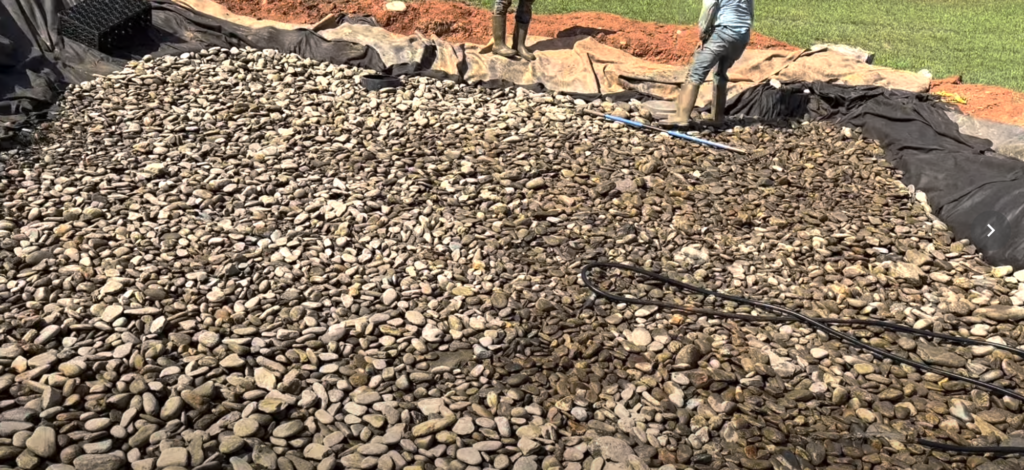
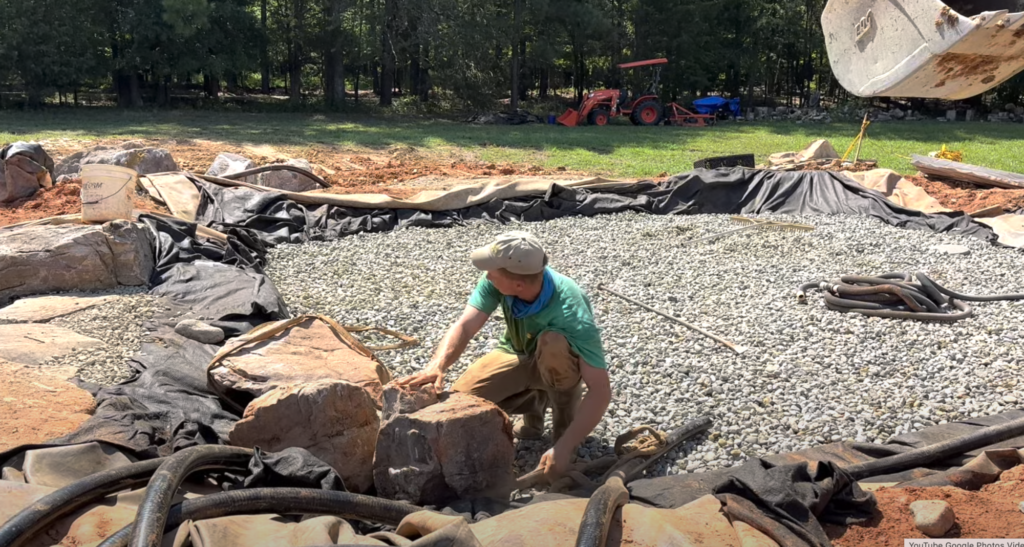
We installed what is called a wetland filter. The black crates are called aquablox. When the feature is running the water will get pumped to the cylinder tubes at the bottom of the filter called Centipedes. Then the water will rise up through the black crates called aquablox where the water velocity will slow dramatically and debris will settle to the bottom as the water rises acting as a settling chamber. On top of the aquablox will be multiple layers of rocks and gravel. The larger size cobble will be placed on the bottom and the smaller gravel will be placed higher up. The rocks and gravel on top of the aquablox provides surface area for beneficial bacteria to grow. As the water slowly moves up through the filter it will be cleaned by the bacteria colonizing on the gravel.
On top of the filter will be a couple inches of water before it spills over a waterfall entering the main portion of the pond. This top layer will have the smallest size gravel and will be able to be heavily planted with aquatic plants which will also add another form of filtration to the water feature. Boulders will be placed on the sides of the wetland filter to make more of a natural shape. To learn more about wetland filters and how they work check out our Wetland Filter Blog.
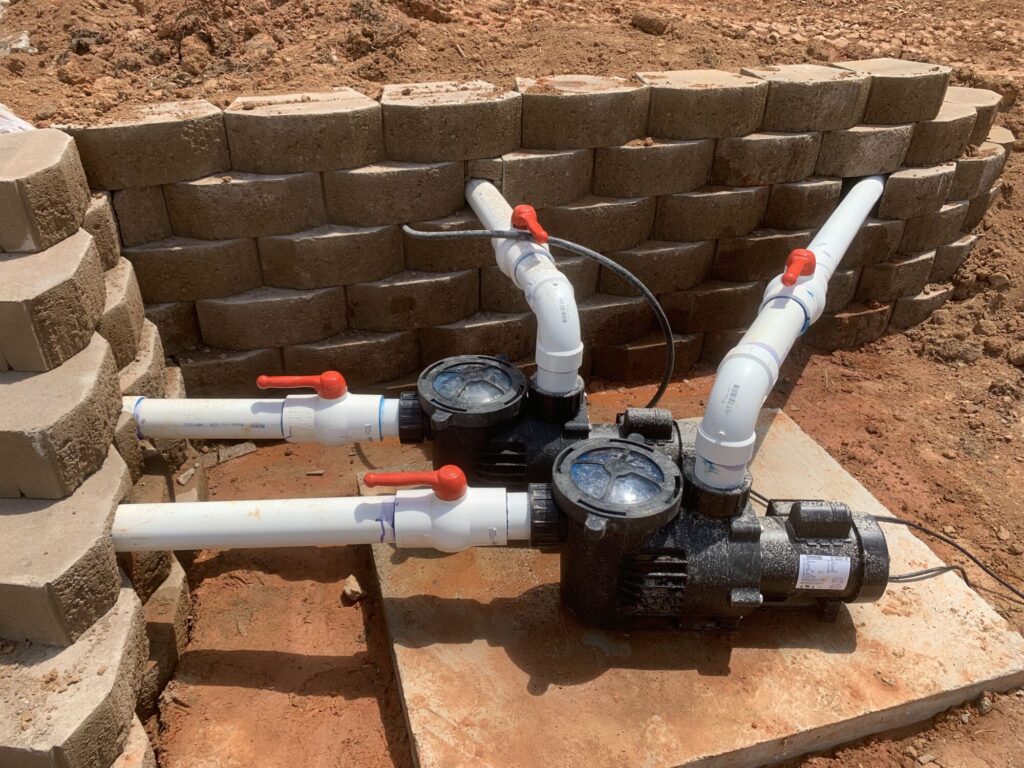
Recreational Pond Pumps
Two out of the water pumps were installed on this recreational pond. We first had to build a solid concrete pad for the pumps to sit on. We then secured the two pumps to the concrete pad and attached the plumbing. We used 3″ PVC plumbing. We also created a retaining wall to help hide the pumps as well as conceal any noise or humming that comes from the pumps. When you are around the pond or up near the house because of the locations of the pumps and retaining wall built around it you can not see or even hear the pumps at all!
It is important to note that all recreational ponds should use out of the water pumps instead of submersible pumps.
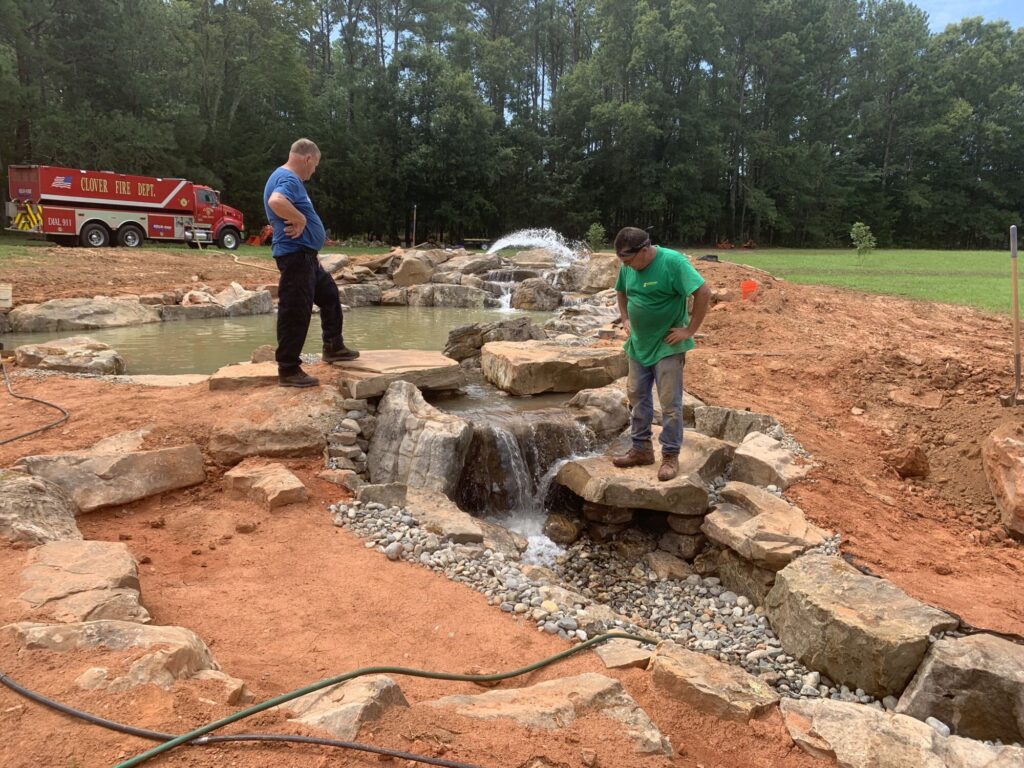
Filling Up The Rec Pond
We called in the Clover Fire Department to help us fill this massive pond. It took over 6 truck loads of water from the fire department to fill the pond totalling over 30,000 gallons of water. The Clover Fire Department was able to drive into the backyard and pump water into the wetland filter at the top of the water feature until it was completely filled.
TikTok Videos Part 1 & 2
@pondscapes_of_charlotte The Proliferators of Ponds are back at it again, producing one of our largest ever projects to date! Check out Part 1 of this recreation pond! #pond #waterfall #fish #backyard #pondscapesofcharlotte #aquascape #recreationpond
♬ 10 minutes BGM for light training such as yoga(845880) – kakumaru
@pondscapes_of_charlotte Check out Part 2/Final Part of our recreation pond build! The Pondscapes of Charlotte guys really put our all into this project so we hope you enjoy! #pond #waterfall #pondscapesofcharlotte #fish #backyard #aquascape #recreationpond
♬ 10 minutes BGM for light training such as yoga(845880) – kakumaru
After Photos
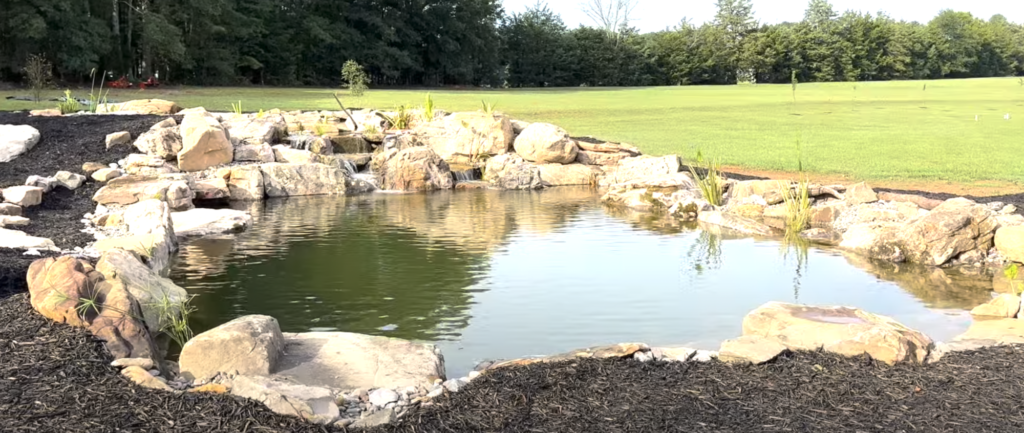

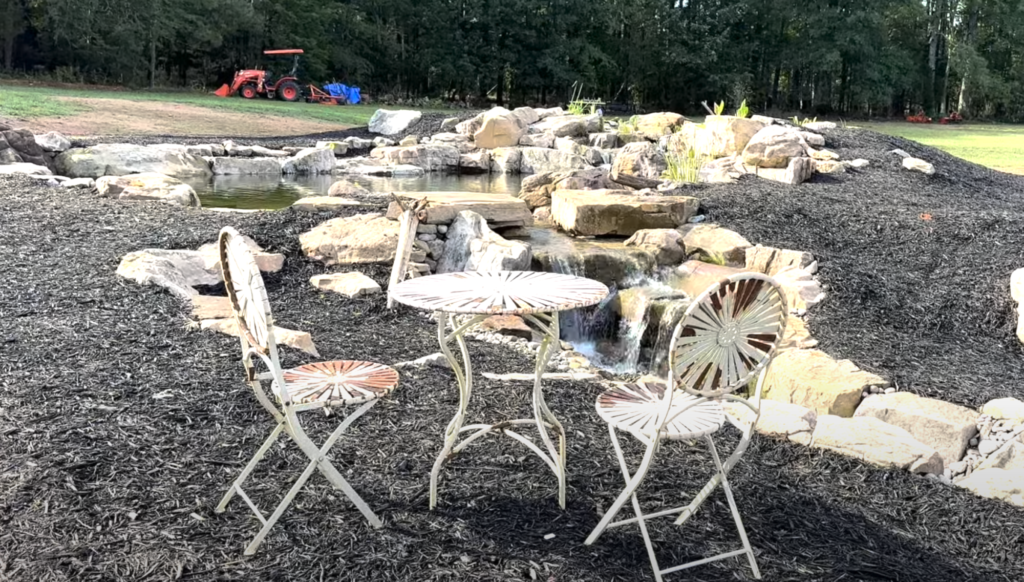
Can You Swim In Your Own Pond?
Absolutely! However, do at your OWN risk most ponds are not built with that idea in mind. It is crucial to maintain the pond properly, ensuring the water remains clean and safe for swimming. Proper filtration, regular maintenance, and monitoring water quality are essential to create a pleasant and safe swimming experience in your pond.
Recreational ponds often have larger filtration systems than normal ponds and ensure that the water quality remains stable and in good condition. These ponds typically mimic natural bodies of water, offering a serene environment and the risks are similar to the ones you would have swimming in a natural pond.
If you are unsure if your pond is safe for swimming it is better to error on the side of caution.


